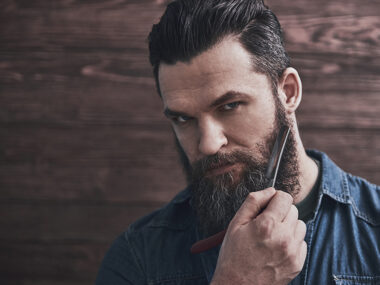For centuries, men have been chasing the elusive dream of a thick, luxurious beard. While some seem to effortlessly sport full, manly manes, others struggle to achieve even a fraction of that glory. But what determines who can grow a beard and who can’t? It’s all in the genes. This article will take a deep dive into the fascinating world of beard genetics, explaining why not everyone can grow a beard, and why that’s perfectly okay.
Chapter 1: The Beard-Growing Gene
Is Beard Growth Genetic?
Ever wondered why some men are blessed with impressive beards while others struggle to muster a few patches? It all comes down to your genes. Beard growth, or lack thereof, is largely hereditary. Specifically, it’s linked to the presence or absence of certain genes that control hair follicle sensitivity to hormones. These genes dictate the fate of your facial hair.
One of the key players in this genetic game is the androgen receptor gene. This gene determines how your hair follicles respond to hormones, particularly testosterone. Men with a high sensitivity to these hormones tend to have thick beards, while those with lower sensitivity may struggle to grow facial hair.
Chapter 2: Androgen Receptors and Beard Potential
The Science of Facial Hair
The fascinating science behind your facial hair begins with androgen receptors. These receptors are proteins that respond to hormones, including testosterone and dihydrotestosterone (DHT). When these hormones bind to androgen receptors in your hair follicles, it triggers the growth of facial hair. The key to a magnificent beard lies in the density of these receptors in your beard area.
Men with a high density of androgen receptors in their facial hair region often boast robust, thick beards. In contrast, those with a lower density of these receptors might find their beard growth less impressive, resulting in patchy or sparse coverage. Your unique genetic makeup determines where you fall on this spectrum.
Chapter 3: Hormones and Beard Growth
The Testosterone Connection
Testosterone, often referred to as the “male hormone,” plays a pivotal role in beard growth. During puberty, the surge in testosterone levels triggers the development of facial hair. This hormone influences the length, thickness, and color of your beard. However, not all testosterone is created equal. A derivative of testosterone, dihydrotestosterone (DHT), is even more influential in promoting terminal hair growth in the beard area.
The concept of the “testosterone threshold” is essential to understand. Your genetics define this threshold, which is the level of testosterone required to activate facial hair growth. Some men have a lower threshold, making them more likely to develop impressive beards, while others may have higher thresholds, making their beard journey more challenging.
Chapter 4: The Role of Age and Genetics
Beard Growth Throughout Life
Your genetic blueprint also influences how your beard evolves over time. Beard development is most prominent during adolescence and early adulthood, thanks to the surge in hormones like testosterone. However, as men age, their beard may continue to develop and change, influenced by genetics.
Some men experience a late bloom, seeing their beards thicken in their 30s and 40s. Genetics play a role in these changes. Whether your beard fills out or takes on new characteristics as you age, your unique genetic makeup plays a significant role.
Chapter 5: The Myth of the “Everyone Can Grow a Beard”
Setting Realistic Expectations
It’s time to debunk the age-old myth: not everyone can grow a full beard, and that’s perfectly okay. Beard genetics are complex and highly individualized. Understanding your genetic predisposition is crucial in setting realistic expectations for your beard journey.
By embracing your unique genetic beard potential, you can embark on a more satisfying and confident beard-growing adventure. Whether you sport a full beard, stubble, or a goatee, your facial hair is an expression of your distinctive genetics and your journey to beard excellence.
Conclusion:
The science of genetics has spoken: not everyone can grow a beard of the same caliber. Your unique genetic makeup, including the presence and density of androgen receptors, the influence of testosterone and DHT, and your age, all shape your beard’s potential. By understanding and embracing these genetic factors, you can confidently navigate your own path to beard greatness.
Additional Resources:








